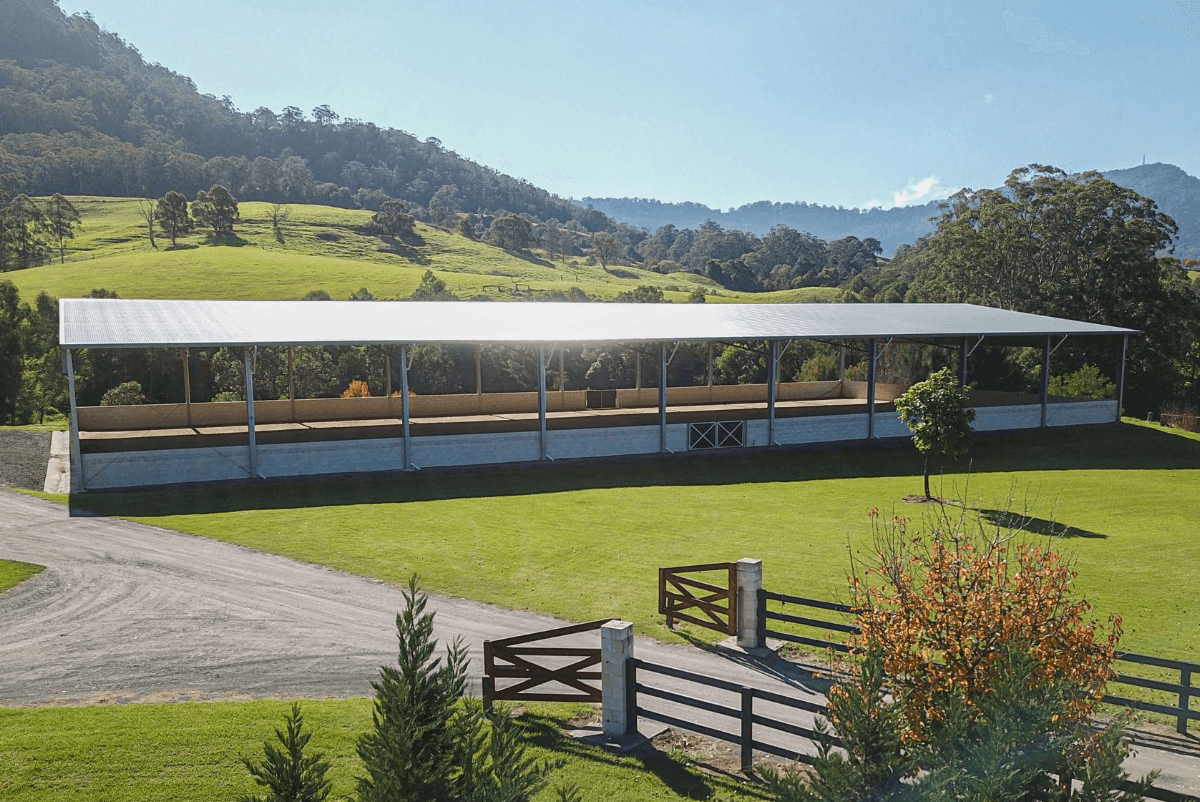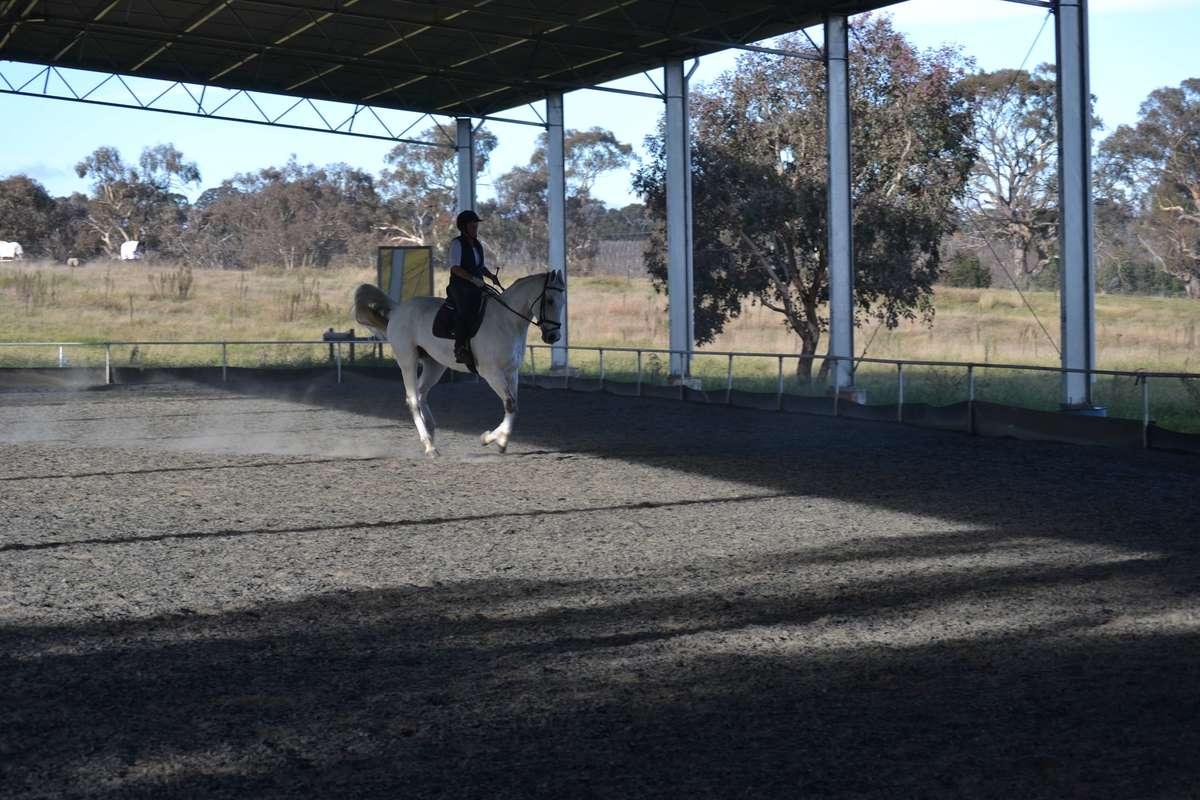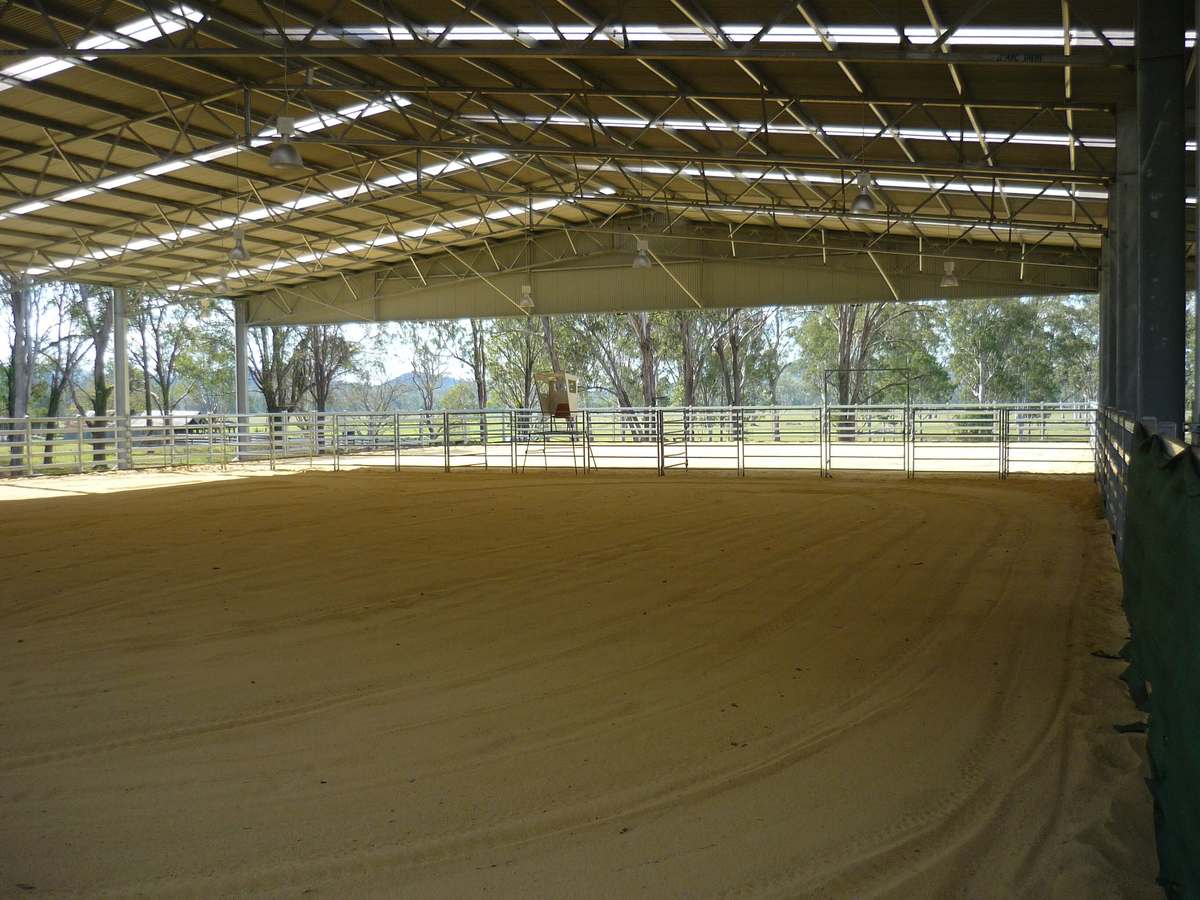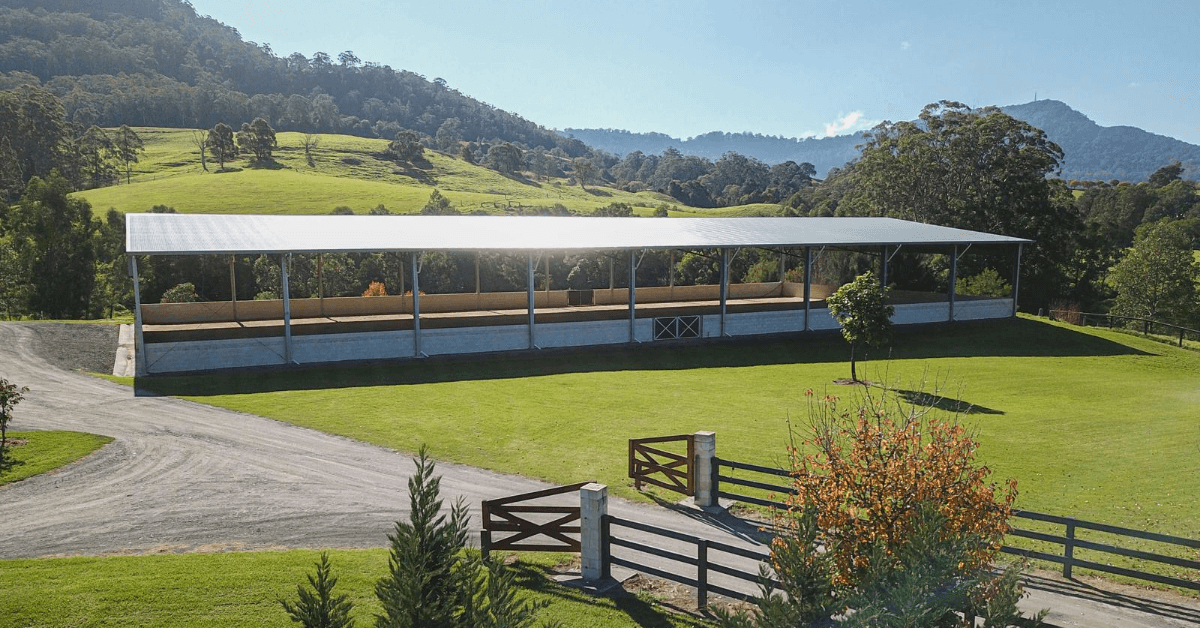Dressage arena surfaces – footing that counts

If you’ve decided to invest in a new dressage arena or perhaps you're giving your existing arena a bit of an upgrade, then you’ll also need to be considering the type of surface flooring that you use in your dressage arena. Something as simple as flooring can make a big difference to your horses’ health and happiness; this health and happiness will then affect your ability to train and how much you get out of your horses in the arena.
So what are the different flooring options available for dressage arena surfaces and just which option will ultimately be best for you, and the comfort of your horses? To help you out we’ve covered some basic considerations that anyone should be thinking about when it comes to dressage arena flooring. Things like your location, the weather and the type of dressage arena you have or will be building will all play a big part in the type of surface you choose for your arena.
Read on to find out more about choosing surface flooring for a dressage arena.
Creating the perfect surface for riding

A dressage arena is generally used for one thing – training and riding horses. It’s because of this that it’s essential that you consider just which type of surface will work best for you, where your dressage arena is located, and how this surface will affect your horses and their comfort levels.
While there’s never going to be a single type of surface that will work for every dressage arena, a dressage arena with quality surface flooring should provide:
- Cushioning: The right amount of cushioning will distribute the impact of the horse’s hooves throughout the layers of the flooring.
- Traction and grip: This is important as it provides a consistent surface so that horses can easily push off the surface without slipping.
- Moisture consistency: Retaining the right amount of moisture so that footing stays as intact as possible is essential. You don’t want your surface flooring breaking down and becoming inconsistent.
- Non-abrasive: While traction and grip are important, you should ensure that the surface is still as non-abrasive as possible. Flooring that’s too abrasive has the potential to damage a horse’s hooves.
- Easy to maintain: A dressage arena that’s designed well should result in minimal maintenance leaving you to do what’s important – ride the horses!
Updating your existing flooring or starting from scratch?
For those of you that have an existing dressage arena and who only wish to update the surface flooring, this can be a good opportunity to research what’s working well currently and possible areas for improvement.
Take the time to watch and listen to your horses as they gallop around the arena – are they slipping at any point, can you hear loud noises from their hooves hitting the surface, are there deep holes in the flooring? Surface flooring that works well for your horses should allow them to comfortably gallop without slipping or falling at any point. If their hooves are making a lot of noise as they hit the surface, this could also indicate that the flooring is too hard. While an arena floor that is too soft will force your horse to work harder and increases the chance of injury due to uneven weight loading.
Consider how often you will use your dressage arena
Like any flooring material, the surface of a dressage arena will face wear and tear if it’s used frequently. No matter whether you’ll be training in your dressage arena once a week or every day, you must consider how this use will impact the surface of your arena. More frequent use will warrant a surface material that can handle this type of persistent activity. The surface that you choose must not only work with your horses, but be able to last you a reasonable amount of time without needing to be topped up or completely replaced.
Where will your dressage arena be located?
Where you’re located in Australia is another important factor to consider when choosing your dressage arena surface. Different weather conditions can have a big impact on the longevity of your surface flooring, especially for dressage arenas that are exposed to the elements. Think about how your surface will hold up on the hottest of summer days and the coldest of winter mornings. Will your ideal surface flooring be able to stand up to potentially harsh weather conditions?
It’s also important to note that most surface materials will naturally face some sort of degradation over time so making sure that you choose the right surface that can withstand the elements is crucial.
Choosing a suitable surface material for your dressage arena

There are three common materials that are used for the surface of a dressage arena. These are:
- Sand
- Wood
- Rubber
While each different material has its own benefits, the flooring material that we’ve seen to be the most popular among dressage arena owners is sand. Sand has many advantages over other surface materials which include:
- Sand is one of the cheaper materials, especially when bought in bulk.
- Sand dries rapidly (if paired with good drainage) which will help to reduce arena damage.
- Sand can be mixed with other materials like sawdust and rubber to improve the sturdiness of the surface.
While sand is the most popular surface material please note that there are many different types of sand available, so you’ll still need to consider the type of sand that’s just right for your dressage arena. Using sand that’s too fine has the potential to blow away in unfavourable weather conditions and could result in horses hooves sinking through; while sand that’s too coarse, has the potential to damage horses’ hooves. Having the right mix of sand that’s both fine and coarse enough to not blow away will often come down to your location, and how often you will be using the arena. Angular sand, which grips against itself and doesn’t ‘give’ too much, provides soft cushioning without compromising on grip.
If you need further guidance around the type of sand to use in your dressage arena it can be helpful to talk to others in your local area who also have an arena to see what type of flooring they use, and why. The immediate surface of your dressage arena is only one part to consider. The base surface and drainage are equally important and even the best surface material may not live up to expectations if corners have been cut elsewhere.
As you can see there’s lots to consider when deciding on the right surface flooring for your dressage arena! If you’re looking to construct a new dressage arena for your property and would like a bit of advice on a dressage arena shed design that’s right for you, then we’d love to help! Our team of rural and equestrian shed experts can help you to plan the dressage arena that will not only work for you and your property, but your horses too.
Contact our expert team today to get the design process underway!
-1.png?width=3641&height=660&name=abcshedstransparent2%20(1)-1.png)





